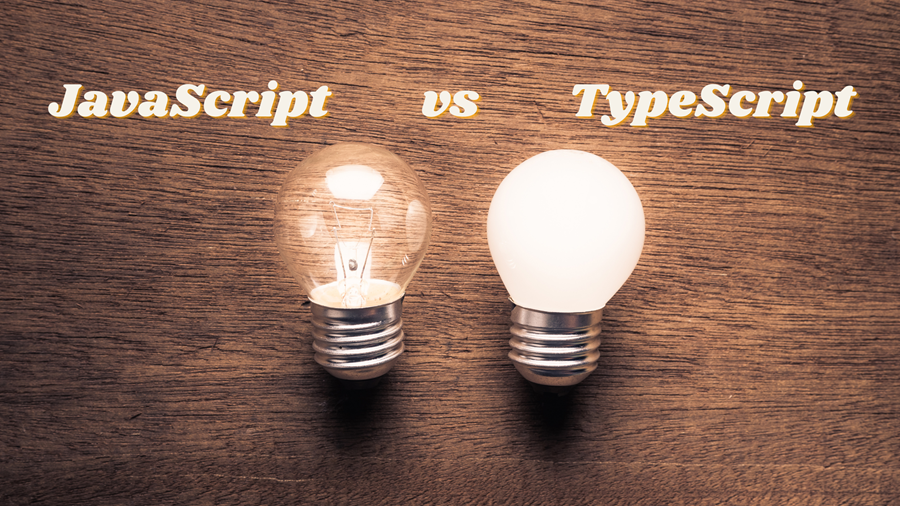JavaScript vs TypeScript: Key Differences
When it comes to web development, the choice between JavaScript and TypeScript can be a tricky one. After all, both offer a myriad of features, both have their own capabilities, and both are useful for different use cases.
If you wish to build a high-performing and scalable application using one of these two frameworks, you'll want to consider their pros and cons.
In this post, we will understand the nitty-gritty of JavaScript vs. TypeScript and demystify what makes each language unique.
Table of Contents
- What is JavaScript?
- What is TypeScript?
- What are the pros and cons of JavaScript?
- What are the pros and cons of TypeScript?
- When to use JavaScript and TypeScript
- Conclusion
What is JavaScript?
JavaScript is a high-level interpreted programming language that is dynamically typed. It is predominantly used for creating responsive and interactive web pages. After its inception in the mid-90s, it has carved a name for itself as the language that powers the dynamic nature of the World Wide Web.
Website developers use JavaScript for building complex user interfaces replete with dynamic styling and real-time updates. Interestingly, JavaScript is not only used in front-end development but also on the server side via technologies like Node.js.
One of the reasons why JavaScript is really popular is because it can run in any web browser.
What is TypeScript?
Unlike JavaScript, TypeScript is a statistically typed language. It offers a slightly different approach to web development from its dynamically typed counterpart JavaScript. It was developed by Microsoft as a superset of JavaScript language. In simple language, any valid JavaScript code is also a valid TypeScript code.
Even though JavaScript is a highly flexible language, it can get extremely complex and difficult to maintain as the size of the project grows. TypeScript effectively addresses this issue by introducing an optional static typing capability along with OOP features like classes, interfaces, and modules. The biggest benefit of this is that you can find errors early in the development process. This ensures that your code is easily maintainable and scalable.
What are the pros and cons of JavaScript?
Here are some positives of JavaScript -
- The learning curve is quite flat. Yes, JavaScript is extremely easy to learn owing to its simple syntax and a thriving developer community to answer any questions you might have.
- It is a highly versatile language making it suitable for all types of projects ranging from small scripts to full-fledged web applications.
- It can be used for both front-end and back-end development. It can also be used along with a wide range of technologies and platforms.
Here are some negatives of JavaScript -
- Due to the dynamic typing aspect of JavaScript, it can be more difficult to catch errors, particularly in big projects. Quality of code becomes a major issue in such cases.
- Since JavaScript is extremely versatile and flexible in nature, there are high chances of finding inconsistencies in code. After all, there are multiple ways to write equivalent code in JavaScript.
- Since JavaScript is a client-side language, it is often subjected to cyber-attacks.
What are the pros and cons of TypeScript?
Here are some positives of TypeScript -
- Thanks to the strict type system and the type interference offered by TypeScript, it is extremely easy for teams to collaborate on projects and understand the codebase.
- The static typing aspect of TypeScript makes it very easy to catch errors. This ensures the code quality is always high irrespective of the size of the project.
- TypeScript comes loaded with a variety of object-oriented features like classes and interfaces. This makes it very easy to write well-structured and reusable code.
- Since TypeScript is a superset of JavaScript, you can easily integrate it with existing JavaScript codes and libraries.
Here are some negatives of TypeScript -
- Unlike JavaScript, TypeScript has a steep learning curve, especially for developers who are not accustomed to static type and OOP concepts.
- TypeScript codes require transpiling This is simply an additional step in your development project.
- OOP languages experts argue that TypeScript is not a 100% statically typing language. For starters, this is an optional component of TypeScript. Besides that, there is also transpiling that anyways converts it into an untyped JavaScript. This means there can be unexpected type conversions during runtime.
When to choose JavaScript and TypeScript?
Here are some tips for deciding between the two programming languages-
- If you are particular about type safety in your project, then TypeScript is always a better choice over JavaScript. This is mainly because TypeScript offers type checking during compile time that automatically catches type-related issues much earlier in the project.
- TypeScript is recommended for large projects as static type checking can help in catching errors early. This will improve the overall development experience. However, for smaller projects, TypeScript might be quite an overkill.
- Most developers might already be familiar with JavaScript. If you have such a team, then it is an overhead to switch to TypeScript.
- In case your project has too many existing JavaScript libraries, frameworks, and codes, then it is always better to stick with JavaScript.
- If you want to support older browsers, then JavaScript is always a better choice than TypeScript.
Conclusion
Both JavaScript and TypeScript are powerful programming languages in their own way. They have their own set of advantages and disadvantages that you must carefully evaluate before picking one for your project. Long story short, the choice between JavaScript and TypeScript will greatly depend on your requirements and the constraints of your project, and the skills of your development team.
